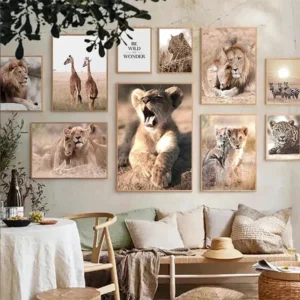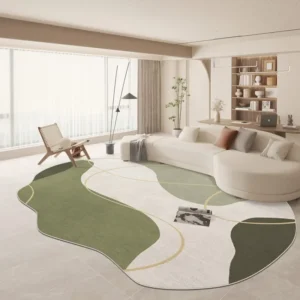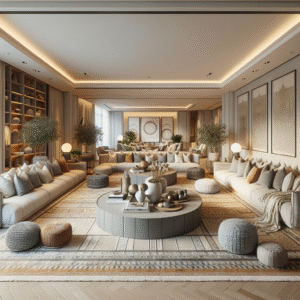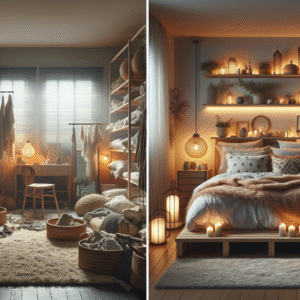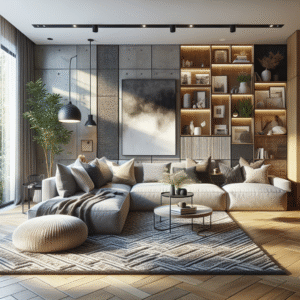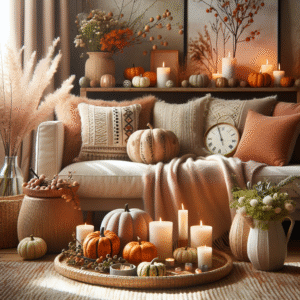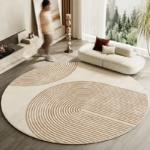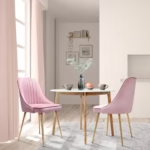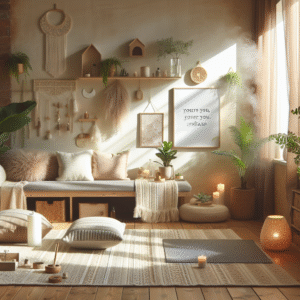Elevate Every Space: The Ultimate Guide to Choosing Wall Art by Room Function
Introduction
Choosing the right wall art is more than just aesthetics; it plays a crucial role in expressing your personality and enhancing the functionality of each room in your home. Have you ever walked into a room and felt it was missing that extra touch? The right artwork can transform empty walls into captivating focal points, which makes understanding how to select wall art based on room purpose essential.
This ultimate guide is designed to help you navigate the world of wall art, guiding you through selecting the perfect pieces for each room in your home. You’ll learn how to assess the space, choose the right style, and implement your selections effectively. By the end of this article, you’ll have all the insights needed to elevate every room in your home with stunning wall art.
We’ll cover the following key areas:
- Understanding Different Room Functions
- Types of Wall Art
- Choosing Art for Specific Rooms
- Art Display Techniques
- Maintaining and Caring for Your Artwork
- Budgeting for Art Purchases
Understanding Different Room Functions
Before diving into the types of wall art available, it’s essential to understand the primary functions of various rooms in your home. Each room serves a unique purpose, influencing not just the art you choose, but how you display it.
Living Areas
Living areas are designed for social interaction and relaxation, typically featuring larger or statement pieces of art. The goal is to create a welcoming atmosphere.
Kitchens
Art in kitchens should inspire creativity or provide a sense of warmth. Choose smaller, easy-to-clean pieces that reflect a cozy ambiance.
Bedrooms
In bedrooms, art should evoke tranquility. Soft colors and calming themes help create a restful environment.
Bathrooms
For bathrooms, moisture-resistant artwork is crucial. Opt for prints or quirky decor that adds charm without compromising hygiene.
Home Offices
Your workspace should motivate and inspire productivity. Art that encourages creativity or conveys professionalism works best here.
Types of Wall Art
There’s a plethora of wall art types, each offering different styles and expressions. Here are some popular options:
- Paintings: Classic and timeless, paintings can range from abstract to realism, depending on the desired aesthetic.
- Prints: Affordable and versatile, prints come in various sizes and styles, making them perfect for any space.
- Photography: Black and white or vibrant, photography can capture memories or make powerful statements.
- Wall Decals: Great for renters or children’s rooms, these are temporary and easy to remove.
- Textile Art: Tapestries or fabric wall hangings offer texture and warmth.
- Mix Media: Combining various materials can create unique and eye-catching art pieces.
Choosing Art for Specific Rooms
Living Room
Your living room is a place for socializing, so select art that sparks conversations. Large statement pieces or a gallery wall can serve as the perfect solution.
Kitchen
Bright, cheerful art can enhance the mood in your kitchen. Consider food-related prints or fun quotes that resonate with you.
Bedroom
In the bedroom, soft landscapes or abstract art in pastel colors can foster a soothing environment, aiding in relaxation and rest.
Bathroom
Choose water-resistant prints or framed art to withstand humidity. Nautical themes or botanical prints can work wonderfully in this setting.
Home Office
Inspirational quotes or striking abstract art can stimulate creativity, making your workspace more enjoyable and productive.
Art Display Techniques
How you display your art is as important as the art itself. Here are several techniques:
Gallery Wall
A gallery wall involves hanging multiple art pieces in a cohesive arrangement, perfect for showcasing a variety of styles and sizes.
Shelf Displays
Shelves allow you to mix art with objects, making a more curated display. It’s also an excellent option for those reluctant to put holes in walls.
Framing and Matting
Proper framing can elevate the presentation of your artwork. Consider using mats for a professional look and to enhance color contrast.
Floating Shelves
Floating shelves give a modern feel and allow you to change art frequently without rehanging anything.
Seasonal Rotations
Consider changing your artwork seasonally to keep your space fresh and exciting!
Maintaining and Caring for Your Artwork
To ensure your artwork lasts, you must care for it properly. Here are some tips:
Dust Regularly
Use a soft cloth to remove dust from frames and surfaces. Avoid harsh chemicals that could damage the artwork.
Control Lighting
Avoid direct sunlight which can fade colors. Consider UV-protective glass for valuable pieces.
Humidity Levels
Maintain appropriate humidity levels to prevent warping or mold. Investing in a dehumidifier can save your artwork from damage.
Rotate Art
Change your artwork periodically to prevent burnout and extend its life in your display.
Budgeting for Art Purchases
Art doesn’t have to be expensive. Here’s how to budget effectively:
Set a Budget
Determine how much you’re willing to spend on wall art. Consider prioritizing quality over quantity.
Explore Various Sources
Check out local art fairs, online marketplaces, and galleries. You can discover unique pieces at various price points.
Consider DIY Options
If you’re artistic, create your own artwork! It adds a personal touch to your space and saves money.
Frequently Asked Questions
What type of wall art is popular?
Currently, abstract art, nature-themed prints, and personalized pieces are trending for their versatility and aesthetics.
How do I choose the right size art piece?
Consider the wall size and the space around it. Larger walls can handle bigger pieces or collections, while smaller walls benefit from compact art or groupings.
Should I match colors with my furniture?
While matching can create harmony, contrasting colors can also enhance visual interest. Choose a palette that resonates with you!
Can I hang art in high-traffic areas?
Absolutely! Just be sure to use frames and mounting hardware that can withstand frequent movement or impacts.
How can I protect my art from fading?
Keep it out of direct sunlight and consider UV-protective glass for framed pieces to ensure longevity.
Conclusion and Next Steps
Choosing the right wall art can transform your home, making it an extension of your personality. By understanding the functionality of each room, exploring various art types, and applying effective display techniques, you can elevate every space into something extraordinary.
Start by picking one room and focusing on selecting the perfect piece. As you proceed, remember to also keep care practices in mind. Ready to dive into the world of wall art? Check out our related articles for more insights and inspiration!
Content Disclaimer
The information provided in this article is for educational purposes only and should not be considered professional advice. Always consult with a qualified expert for specific guidance related to your situation.
Categories
- Accent Walls & Ceilings (10)
- Art Curation & Gallery (27)
- Bedding Style Trends (43)
- Bedroom Makeover (30)
- Bohemian & Eclectic Styles (10)
- DIY & Budget-Friendly Decor (9)
- Eco-Friendly Design (10)
- Furniture Care (30)
- Home Decor & Design Ideas (101)
- Home Wellness Spaces (10)
- Integrated Outdoor Living (9)
- Kids and Nursery Decor (10)
- Living Room Decor (31)
- Minimalist & Japandi Style (13)
- Mix & Match Techniques (31)
- Modern & Contemporary Design (9)
- Rug Sizing & Placement (30)
- Seasonal Home Decor (32)
- Small Space Solutions (14)
- Wall Art & Painting Tips (31)
Recent Posts
Recent Comments
Archives
Product Gallery
-
 African Grassland Animal Scenery Poster Autumn Canvas Painting Lion Zebra Giraffe Prints Pictures for Modern Home Room Decor
African Grassland Animal Scenery Poster Autumn Canvas Painting Lion Zebra Giraffe Prints Pictures for Modern Home Room Decor
-
 Large Area Green Rugs for Bedroom Nordic Living Room Decoration Shaped Carpet Irregular Plush Lounge Rug Home Thick Washable Mat Rated 5.00 out of 5$57.07 – $359.83Price range: $57.07 through $359.83
Large Area Green Rugs for Bedroom Nordic Living Room Decoration Shaped Carpet Irregular Plush Lounge Rug Home Thick Washable Mat Rated 5.00 out of 5$57.07 – $359.83Price range: $57.07 through $359.83 -
 Nordic Style Rugs for Bedroom Morandi Living Room Decoration Carpet Large Area Geometry Lounge Rug Home Cloakroom Non-slip Mat Rated 5.00 out of 5$40.98 – $620.81Price range: $40.98 through $620.81
Nordic Style Rugs for Bedroom Morandi Living Room Decoration Carpet Large Area Geometry Lounge Rug Home Cloakroom Non-slip Mat Rated 5.00 out of 5$40.98 – $620.81Price range: $40.98 through $620.81






